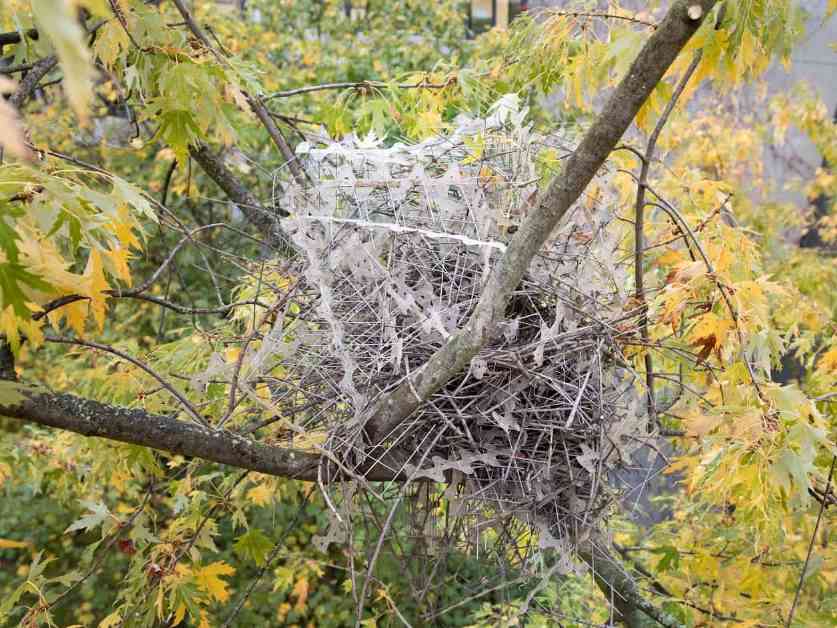Look around your city and you’ll be bound to spot them in many buildings. Anti-bird spikes are placed to scare away birds and prevent them from building nests in urban areas. But it seems some birds are not intimidated at all.
Nests recovered by researchers from trees in cities in Europe were found to be built from large numbers of strips of the anti-bird spikes. One particular nest in Antwerp, Belgium, was discovered in the courtyard of a hospital, built by magpies using a staggering 1,500 pieces of metal spikes. The lead author of the study, Auke-Florian Hiemstra, described it as an “impregnable fortress” as birds use the pins to keep other birds away.
Magpies are known to build a roof on their nests to protect their eggs and young, using thorny plants in nature. However, in urban environments, magpies have adapted and discovered anti-bird spikes as another alternative to keep other nosy birds at bay. The study found instances of magpie nests incorporating anti-bird spikes in the Netherlands, Belgium, and Scotland, as well as using other sharp materials like barbed wire and knitting needles for their nests.
In the past, birds have been found to add urban materials to their nests, such as a crow’s nest built from copper, iron, and barbed wire in South Africa in 1933. More recently, viral videos of rebellious birds not being scared by anti-bird spikes have gained fame on social media.
Auke-Florian Hiemstra, who is currently doing a Ph.D. at Leiden University on the use of artificial materials in animal structures, has published previous papers on how birds use plastic plants to build their nests. He has also found unconventional nesting materials like condoms, sunglasses, windshield wipers, and even cocaine wraps used by birds.
The magpie’s nest in Antwerp has become a new highlight at the Naturalis Biodiversity Center in Leiden, Netherlands. The study, published in the Journal of the Natural History Museum in Rotterdam, showcases the innovative ways in which birds adapt to urban environments and utilize human-made materials in their nest construction. It goes to show that even bird-repellent sharp spikes are not enough to deter determined magpies from creating their homes with unconventional materials.






